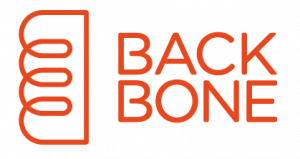Solutions for
Spinal Motion
Preservation
Back Pain:
1st cause of disability worldwide
Spinal injuries and diseases are among the most complex ailments encountered in a medical practice. A great number of patients suffer from the broad range of disease processes that can affect the spine, including degenerative conditions such as lumbar and cervical disc diseases and rheumatoid arthritis, compression syndromes, spinal cord and vertebral tumors, spinal cord malformations, trauma and infections.
Such problems may be the result of disease, abnormal development from birth (congenital), from aging or “wear and tear” (degenerative), trauma from an injury, from infection from a tumor (neoplastic) or perhaps even related to other medical conditions.
Low back pain is the single biggest cause of years lived with disability worldwide, and a major challenge to international health systems1.
1 James SL, Abate D, Abate KH, Abay SM, Abbafati C, Abbasi N, et al.; GBD 2017 Disease and Injury Incidence and Prevalence Collaborators. Global, regional, and national incidence, prevalence, and years lived with disability for 354 diseases and injuries for 195 countries and territories, 1990-2017: a systematic analysis for the Global Burden of Disease Study 2017. Lancet. 2018 11 10;392(10159):1789–858. doi: http://dx.doi.org/10.1016/S0140-6736(18)32279-7 PMID: 30496104
Decompression Of Neural Elements,
Stabilization Of Motion Segments,
& Balancing The Vertebral Alignment
Spine Surgery
The principals of spinal surgery include decompression of neural elements, stabilization of motion segments, and balancing the vertebral alignment. Any surgical solution that does not respect these cardinal principals can lead to complications and adverse events.
In extreme cases such as the collapsed disc or the correction of scoliosis, fixation of multiple spinal segments arthrodesis and intended bone fusion are often necessary and unavoidable.
However, arthrodesis inevitably causes a loss in the range of physiological motion of the spinal segments and consequently may lead to multiple problems, including stiffness, junctional kyphosis, increased risk of adjacent segment disease (ASD), pseudoarthrosis, facet arthropathy, spondylolysis, and spondylolisthesis.
We have got your BACK
For Spinal patients with failed conservative management, BACKBONE aspires to provide motion preservation surgical solutions that stabilize the motion segments, restore spinal sagittal balance and liberate the neural structures.
Our intent is to closely restore or replicate normal spinal biomechanics in order to limit the complications associated with conventional surgical treatments.
PRODUCT
NEWS
TESTIMONIALS

